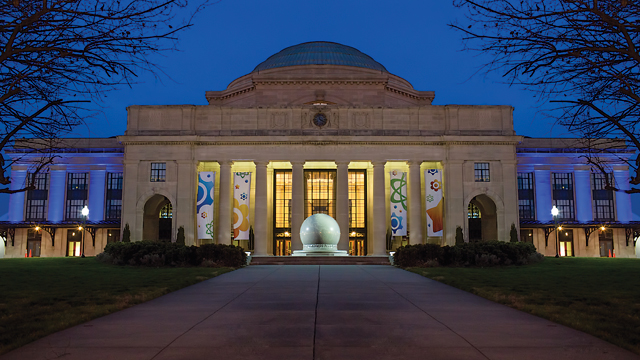As a child, David Neale cringed at the thought of visiting a museum with family or friends.
Docents hushing the masses, fragile exhibits protected by rope barriers, and boring history lessons, he knew, awaited him.
Then his father took him to the Science Museum of Virginia.
“I was crazy about the place,” he said. “As a kid, you think of a museum as a place where things hang on a wall, where things sit behind glass. There are ‘please do not touch’ signs everywhere. But at the Science Museum, they want you to touch everything. As a kid, that was so exciting to me.”
It still is. Now a father himself, Neale regularly brings his own son to the Science Museum. And like his father, 13-year-old Luke can’t get enough of the hands-on exhibits.
“It’s one of my favorite things to do,” he said. “I love science and learning how things work. It’s also pretty neat that my father went here when he was a kid. I think it’s cool he got the same experience then that I’m getting now.”
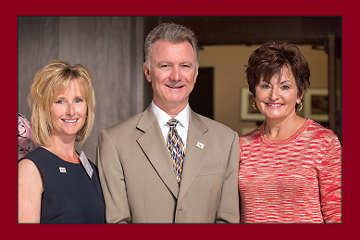
Well, not exactly. When Neale, who grew up in Richmond’s far West End, began visiting the Science Museum more than thirty years ago, he remembers placing his hand on a giant ball and watching his hair stand straight up. Today, he and his son scan cards that record and track their progress
on competitive activities, like walking a tightrope.
“The technology has certainly progressed,” Neale said. “They are keeping up with the times and doing what’s necessary to keep the attention of the kids.”
A former train station, the Science Museum opened in 1977 with one permanent exhibit gallery, The Discovery Room. Over the years, the museum has expanded and evolved, with one of its biggest efforts getting underway in 2012. That’s when the museum kicked off its $60 million campaign to transform the entire museum. To date, the campaign has raised nearly $40 million.
“Throughout this campaign, we have gone out into the community to really look at and listen to people’s needs,” said Richard Conti, the museum’s chief wonder officer. “We are attuned to what’s going on and meeting them where they are.”
The main emphasis is connecting the audience to the power of STEM, or science, technology, engineering, and math education, as well as inspiring young people to consider a STEM career.
“Whatever you do, our quality of life is so improved by science, technology, engineering, and math,” Conti said. “We are trying to bring to life here what they learn in the classroom.”
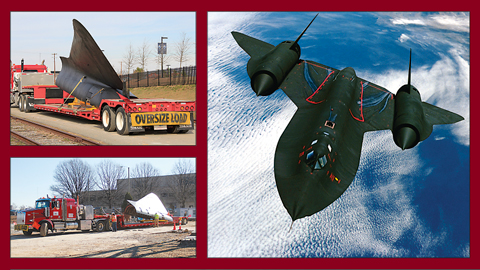
Walk into the Science Museum today, and you’ll feel that change is in the air. In January, the museum transported its SR-71 Blackbird from the Virginia Aviation Museum to its new home inside the main concourse at the Science Museum. Workers disassembled the plane and brought it inside in seven main pieces. They then reassembled the plane, which weighs 43,000 pounds and has a wingspan of 55 feet, on a platform before hanging it from the ceiling.
The plane, one of the fastest in history, is part of the Speed exhibit, which will open by summer. The 10,000-square-foot gallery unveils how motion and time intersect across a world of science and technology. Exhibits will display bold demonstrations of the incredibly fast and the hyper slow. Visitors will have the chance to participate in sports activities and discover the speed of a waterfall, erosion, and evolution.
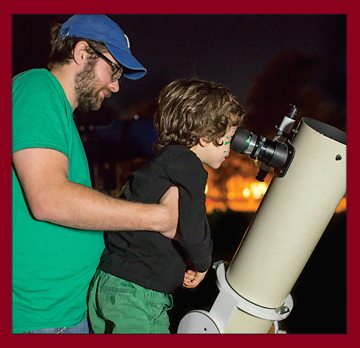
Parents especially may appreciate – or be alarmed by – an exhibit that details how fast viruses can spread. This powerful interactive exhibit experience allows visitors to not only start a virus, but introduce the vaccine that can slow its spread.
“Our physical spaces are catching up with what’s happening in the world today,” Conti said. “We are presenting science in different ways so that it is relevant to everybody.”
The Boost! gallery, for example, offers a new approach to human physiology and the science of staying healthy. Opened in June 2013, this was the museum’s first new permanent exhibition in a decade. It provides visitors with the opportunity to follow their progress over time in a number of challenging activities, like walking a tightrope. They can play animatronic instruments, sample healthy snacks made in the kitchen stadium, and practice yoga.
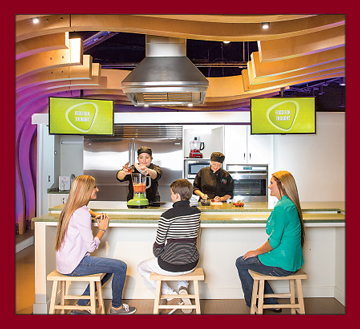
A year after Boost!, the museum upgraded The Dome. The $2.2 million project converted the 5-story dome theater from IMAX to an all-digital projection system. The 76-foot screen is the largest in the state. Screenings include movies, as well as astronomy programs that incorporate lessons from educators.
This spring, in addition to Speed, the LightPlace gallery will open. Designed for preschoolers, the exhibit will be themed around light to engage budding scientists. And in 2017, the Dewey Gottwald Center will open. This $12 million project will include new space to be built behind the main concourse of the museum. This community event center will be used for large-scale national exhibits, as well as community events.
Future plans also call for taking the science experience outdoors for families, with a science playground, garden, and water feature.
“It’s not like the old days when you dreaded your parents dragging you to a museum,” said Elizabeth Johnson, who regularly takes her two sons, Christopher and David, to the museum. “They are allowed to learn and experience new discoveries while having fun.”
Johnson’s sons often conduct their own science experiments on the kitchen table at home, from mixing Mentos with Diet Coke to making goo out of corn starch, glue, and water.
“My favorite was the goo,” said David, thirteen. “We made it different colors, and we made quite a mess.”
His mom doesn’t mind the mess too much because she enjoys seeing her sons stretch their minds with science.
“The mess goes with the territory,” she said. “I’m just so glad they have the interest. You find in the workforce today, they need more highly technical positions. So anytime I can take them to the Science Museum to encourage that path, I will. It’s amazing watching them there. You can almost see their wheels turning.”
According to the President’s Council of Advisors on Science and Technology, economic projections point to a need for approximately one million more STEM professionals than the U.S. will produce at the current rate over the next decade.
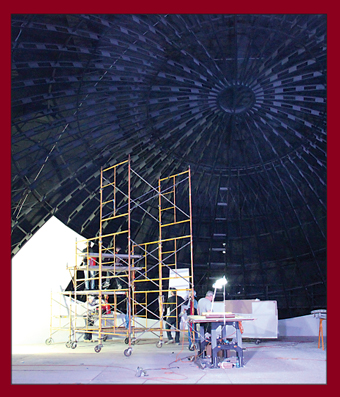
“I think there is a lack of awareness as to the careers that are out there and in high demand,” said Kim Dye, science curriculum specialist for Hanover County schools. “So what is going on at the Science Museum is very exciting. They have so many resources there that encourage critical thinking and problem solving.”
Students are challenged in the classroom, Dye said, but the Science Museum offers something unique that may steer them to a STEM-related career.
“This is another level that gives students a new way of looking at things,” she said.
The museum will adapt a school group’s visit to what they are studying in class. Elementary school students might look at the pendulum in the lobby and try to determine a simple pattern, while high school students might study the physics behind it.
“When I was a teacher, my students could get immersed in several things at the museum that they could touch,” Dye said. “But they weren’t making connections. They weren’t going any deeper than playing with science.”
Before, Dye said, her students might have built a paper airplane and competed to see whose creation traveled the farthest. Today, that experience has evolved to include independent variables – when students change the shape of an airplane, why does it fly farther, or perhaps, crash at takeoff?
“It’s nice to see that evolution,” Dye said. “It’s a great thing for our students.”
Conti, who left his position in Norfolk as executive director of Nauticus to come to Richmond in 2008, is excited by the progress made so far. He became the Science Museum’s third director in forty years.
“When I came, we wanted to take a fresh look at what we were doing here,” he said. “When they hired me, the first thing they said was, ‘What are we going to do?’ I was honest and said I didn’t know.”
With big budget cuts coming at the start of the recession, it was a tough time to go out into the community and ask for money. Instead, Conti visited eighty-five different organizations and observed and listened.
“I wanted to learn what the needs of the community were and how we could complement them,” he said. “What we learned was that we needed to be more relevant. Instead of telling people what they needed to know about science, we wanted to take a let’s-discover-it together-approach.”
With input from thousands, the Science Museum kicked off its fundraising campaign. Noticeable changes will be incorporating more humor, pop culture, and current issues and events into exhibits. Climate change, for example, will be explored in the Speed gallery.
“The Science Museum has been a great thing for my son,” said Angie Hutchison, a Henrico County resident. “Tyler used to be so painfully shy. This place has been almost life-changing for him. He’s really come out of his shell.”
Tyler, a ninth-grader at St. Christopher’s, is a member of the Richmond Astronomical Society. He sets up his telescope monthly on the Science Museum lawn as part of Science After Dark, helping others appreciate the science of the sky.
“Even though I am naturally extremely shy, I was able to step out of my comfort zone here,” Tyler said. “The museum has nurtured and expanded my love of science, and it’s helping me interact more comfortably with people.”
For William Breeden, fourteen, it’s all about the science.
“Coming here really keeps young minds engaged,” he said. “Video games are fun for sure, but they can turn your brain to jelly. With science, you are always learning.”
William loves Boost!, where he has made 3D drawings and a television commercial for YouTube. He also enjoys testing himself against his father, Billy, in the memory match game. The two also compete to see who can bench press the most weight or jump the highest.
“The first time we came a few years ago, there was this robotics exhibit where we got to build our own six-legged beetle,” Billy Breeden said. “We had to figure out how to build it so that it could get around obstacles. They never told us the answer. We had to figure it out ourselves. Those are great lessons for real life.”
That’s exactly what the development team with the Science Museum had in mind.
“We knew some of our exhibits were tired and needed refreshing,” Conti said. “It’s been crazy fun to be a part of this transformation. In the end, it’s all about making science relevant to everyone. We know science can be complex, and that’s okay. It’s always beautiful. We want to share that with the world.”
Did you know?
The Science Museum of Virginia is housed in Historic Broad Street Station. Built in 1917, the train station was designed by John Russell Pope, who also designed the Branch House or Branch Museum of Architecture and Design on Monument Avenue, and the Jefferson Memorial, National Archives, and the National Gallery of Art in Washington, DC.
Photos: Sean DeWitt, Science Museum of Virginia, Lockheed Martin Corporation
Science for All is a Priority
The Curiosity Guide Helps Families with Kids of All Abilities Learn, Explore, and Discover
Terri Rose understands the challenges families face when they plan an outing for children with disabilities.
Loud sounds can turn a fun event into a nightmare. Bright, flashing lights can bring fear to any special occasion.
“We are here to serve the entire community, so we want to do everything in our power to make sure that all families have a positive experience when they visit us,” Rose said.
Rose is the director of communications and curiosity at the Science Museum of Virginia. Last year, she helped support Autism Speaks, a national autism advocacy organization, by turning the entire exterior of the Science Museum building blue with the help of lights.
“Blue is the color for Autism Speaks,” Rose said. “We wanted to help bring awareness to Richmond, to help educate people about autism.”
Autism and autism spectrum disorder (ASD) are both general terms for a group of complex disorders of brain development. These disorders are characterized, in varying degrees, by difficulties in social interaction, verbal and nonverbal communication, and repetitive behaviors.
Rose, the godmother to three children on the autism spectrum, was more than happy to lead the grand illumination effort last spring. She had no idea, however, what it would mean for families in the greater Richmond community.
According to the U.S. Centers for Disease Control and Prevention, about one in sixty-eight American children is identified as on the autism spectrum. That’s a ten-fold increase in forty years. As Rose began talking to the parents of children with disabilities, including autism, she discovered the museum was not serving this important population.
“They said they really would like their children to visit the museum, but they weren’t sure we had anything to offer,” Rose said. “That stung.”
So she formed focus groups and met with healthcare providers and caregivers. She huddled with officials from Walt Disney World who had experienced much success in setting up a sensitivity matrix guide at their resort. She set her sights on doing the same at the Science Museum.
The Curiosity Guide will be available to all families this summer at the museum and online. It will detail all the exhibits, programs, and events, as well as movies and programs showing in The Dome. The guide will include tips for planning a successful visit.
The key component will be an in-depth review that addresses the sensory integration of each program and event, including: smells, flashing lights, loud noises, periods of darkness, bumps, fast action, heat, and the element of surprise. These features often are challenging for guests with disabilities.
“This will be a great resource for anyone needing a little more information, so they can plan the best visit for their families,” Rose said.
The guide will be about forty pages and include a sample itinerary. If a child is extremely sensitive to loud noises or bright lights, for example, the guide will point out exhibits and events that are less stimulating and therefore, a better match.
“It takes the guess work out of it,” Rose said.
While the project started with a focus on the autism spectrum, it has grown to include almost any disability, including brain injuries and anxiety disorders. It even addresses the needs of seniors who suffer from motion sickness who may want to stay away from certain shows in The Dome. And visitors with physical disabilities will find it helpful in avoiding or getting assistance for exhibits that require agility.
“I am very excited about this,” Rose said. “Yes, it is personal for me because I have seen firsthand with my godchildren how powerful it can be when they are allowed to participate. What a wonderful thing to open those doors to everyone!”


